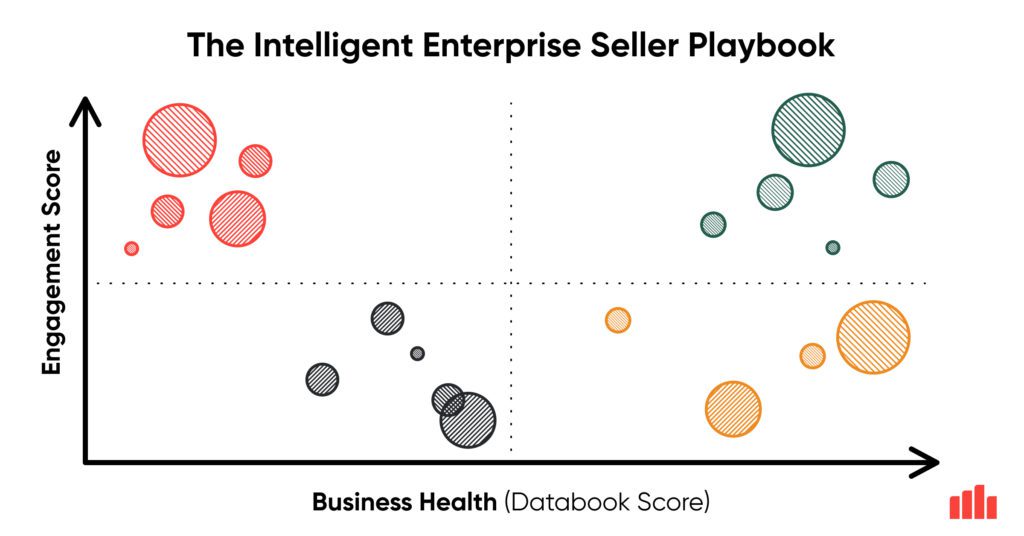In the initial months of the pandemic, I wrote an article aimed at helping enterprise sellers preserve deals while selling in an economic downturn. We were all in reactionary mode at the time, dealing with shutdowns, work closures, and massively slashed budgets. My goal was to remind people that, while we were navigating uncharted waters, salespeople can successfully weather bear economies. Sellers need business acumen and strategic customer insights.
Fast forward two years, and we’re again facing uncertain times. Inflation, while tapering slightly, is higher than it’s been in decades. Interest rates are climbing to combat inflation. Supply chains are still struggling to catch up from pandemic shortages. And there’s a war in Ukraine that—in addition to upending lives—has had drastic consequences on global energy delivery and pricing.
While current economic fluctuations might not be on par with 2020’s extremes, they’re not without impact. Many companies have hit pause on hiring, opex and capex investments as they wait to see what’s next. Businesses want to be sure they have enough free cash flow to sustain operations through another period of uncertainty. Whether it will be six months, twelve months, or longer… no one knows. You have probably felt the sting of these changes, as some of your deals got pushed out from Q2 to Q3, or even further.
The good news, however, is that sales professionals—and sales leaders in particular—don’t have to accept deal delays during an economic slump. I’m going to outline some important strategies here that will help you successfully safeguard your accounts and maintain pipeline.
Remember: focusing on driving customer outcomes and driving tangible business value will not only help with selling in an economic downturn. These strategies will help you close more deals, time after time, in any economy.
Pipeline and TAM are Key to Forward Progress
First things first. As we work through the second half of the year, your job as a sales leader is to get proactive and check your numbers. If you’ve already seen sales cycles extend outwards, that’s a red flag—and you’ve got work to do.
Start by looking at the opportunities in your pipeline. Every deal in there, for every rep, needs to add up to at least 3x of the quota you’re still looking to achieve. This is how you’ll fill gaps for unanticipated changes or delays during economic uncertainty.
What does this mean? Consider a rep on your team with an annual quota of $1.3M who, to date, has only brought in $100K. That rep now needs to bring in $1.2M during the second half of the year. A minimum requisite pipeline should be $3.6M of Stage 2+ (well-qualified deals only) pipeline or they are likely to fall well short of quota.
Take action: Calculate the minimum pipeline required per rep and cross check that pipeline per account has a viable TAM (total addressable market) to achieve this. For example, a $1.2M deal at a mid-size account is less likely than at a large enterprise account.
Takeaway: If you want to keep your entire team on track, check the pipeline against the TAM. Be sure every rep has the bench strength (3x remaining quota) to aggressively push through any issues that arise. Where this isn’t the case, immediately and proactively position new opportunities to bring value to your customers.
Strategically Assess Account Health
Pipeline is important while selling in an economic downturn—but you’re probably wondering how you can count on it (or reinforce it to hit 3x levels) if the economy is pushing so many companies to put large capital investments on hold.
The answer? Economic uncertainty is not a one-size-fits-all problem for your accounts. You have to assess each business individually to see who’s actually at risk—and who’s in need of your help. This is where strategic customer insights really come into play.
Essentially, the more you know about what matters to your customers and prospects, the better you can understand which accounts make the most sense to prioritize at a time when companies are intently focused on reducing both opex and capex. I’ve shared further advice in this article on Adapting Enterprise Sales in a Brave New World.
More importantly, though, deep customer insights can help you understand why certain accounts make sense in times like these. The why behind it all is critical to crafting an account strategy that speaks to executive decision-makers.
So how do you attain these insights, and what do you do with them?
For publicly traded companies, the data you need is all openly available. Read the 8-K reports for your accounts to gauge any changes in investor sentiment. See what executive management is talking about in the latest earnings call transcripts, and read quarterly reports to understand their plans in the coming months. Check the financials. How is the Total Shareholder Return (TSR)? Has the company’s stock been trending downward in this current downcycle, and if so, at what rate?
There are platforms that assess the business health of public companies for you and match that with the solutions your company offers that best fit a prospect’s real needs. That all boils up to a skimmable, easy-to-understand Business Health Score.
Once you understand your account’s situation, you should weigh those insights against your company’s assessment of the account. Look in your CRM for your organization's account scoring or user activity scores. Which accounts show positive indicators in terms of engagement with your solutions?
Then, by plotting all this information on a chart, you can rank your accounts—and any company, actually. You’re ideally looking for accounts that land in the top right, with strong business health (x-axis) and a high engagement score (y-axis). These companies are faring well in current economic conditions, which means they’re more likely to have purchasing power, and they’re actively in need of the value you deliver. With this level of knowledge, you can deliver a point-of-view that cuts through the noise and drives tangible value for customers.
Take AllState or The Coca-Cola Company, for example. Both companies have positive momentum right now as consumers are spending more on insurance and beverages, shifting their dollars from more luxury goods to consumer durables. In terms of the graph, they’re sitting firmly on the right side. And if these companies are already engaged with your solutions, they’d be in the upper right quadrant—your sweet spot. Are you actively working on deals that drive value in their business? How many other companies in your pipeline look more like Coke and AllState?
Learn more about the Intelligent Enterprise Seller's Playbook >>
Here’s another crucial point to remember: You can also use this chart to spot new opportunities, especially during economically strenuous times. Just check the bottom right of the matrix. These companies are doing very well in terms of business health yet aren’t actively engaged with your solution or value propositions. It’s likely that these companies have seen an uptick in stock price (10% or more?) this year, based on increased customer demand for their products and services. That means they have more money and will be less concerned with tightening the purse strings. Furthermore, a current lack of engagement does not rule out possible business needs, both now and in the coming months. These companies could be exactly what you need to fill any gaps and restore pipeline to 3x levels during times of economic uncertainty. Why not dig a little deeper and start a conversation?
Proactive Teams Win, Especially When Selling in an Economic Downturn
While adaptability is critical to weathering economic uncertainty, I believe sales leaders must take a more proactive stance in order to keep quota attainment on track in a downturn. By strategically leveraging deep financial knowledge and customer insights across the entire account portfolio, you’ll do far more than simply survive downturns—you’ll position your team to continuously thrive. You’ll close deals, keep the pipeline well stocked, and create new opportunities. Not just when the economy takes a hit, but all the time.


